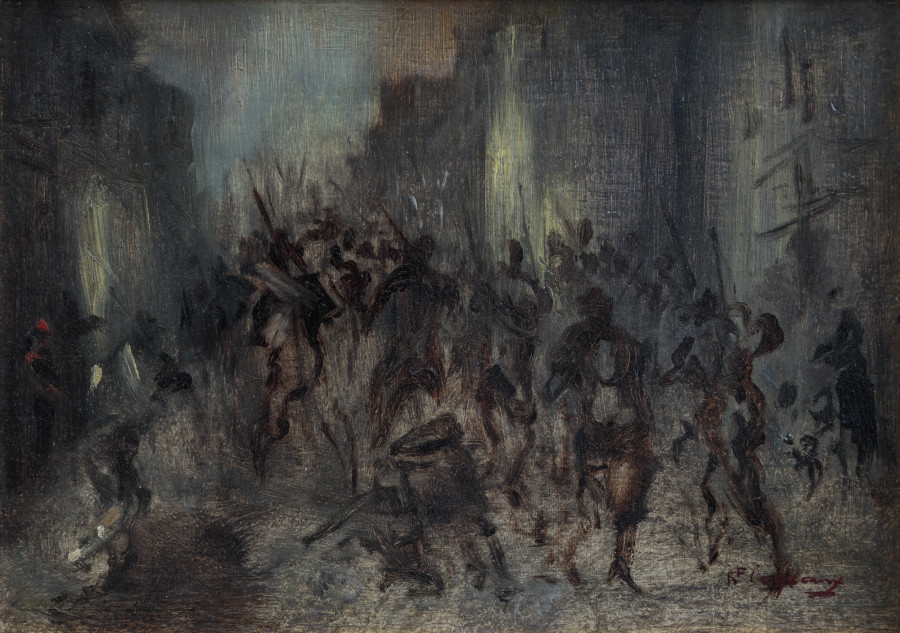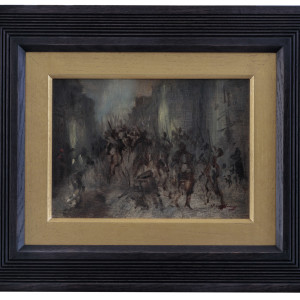Carpeaux’s paintings of the Siege of Paris were the equivalent of a modern-day war photographer depicting events witnessed first-hand.
Provenance
Private collection
Michel Poletti, L'Univers du bronze, Paris
Private collection
Exhibited
Valenciennes, Musée des beaux-arts; Paris, Musée du Luxembourg; Amsterdam, Van Gogh Museum, Carpeaux peintre, 8 October 1999-27 August 2000, no.82
Literature
M. Roche-Pillet, Carpeaux peintre, thesis of the École du Louvre, 1967, no. 132.
P. Ramade, L. de Margerie, L. Des Cars, Carpeaux peintre, Paris, 1999, no. 187, p. 208, illustrated p.114, no. 82, page 281
Catalogue note
Carpeaux was one of the most significant French 19th century sculptors, however it was not until twenty years after his death at his studio sale that it became apparent, he was also a painter. The contents of his studio included a vast repertoire of oils, thereby placing Carpeaux in that exclusive club of artists who excelled in both media. What also became clear was that these newly discovered paintings were never intended for public consumption but were something more private, works that Carpeaux did for himself. The subjects were varied –portraits, landscapes, figure groups, copies after Old Masters and a series of works depicting the Siege of Paris, which were among his most powerful painted images.
Carpeaux’s paintings of the Siege were the equivalent of a modern-day war photographer depicting events witnessed first-hand. In order to escape the Prussian bombardments, Carpeaux left his home and studio in Auteuil and moved to the Luxembourg Palace where his father-in-law was military governor of the Senate. As he walked the streets during the Siege, he observed the consequences of this national tragedy. The one “finished” oil done during this period and which he did put on exhibit depicted – in large-scale – two frightened young orphans. However, most of his paintings of the Siege recorded scenes of battle in the streets.
Unlike the contemporary military paintings by Jean-Louis-Ernest Meissonnier and Edouard Detaille, who each recorded accurate depictions of battle but which they composed in their studios, Carpeaux instead captured the chaotic moments of battle and combat as if holding a camera, where spontaneity became reality. In the present oil, a group of men from the volunteer army seen from behind race into battle. They are squeezed between two buildings on a narrow Paris street, their arms and weapons raised in frenzied, rapid movement. They rush forward in a surge of motion. Carpeaux stresses the movement or at least makes it apparent to the viewer by integrating shades of light and dark in the figures, the buildings and the blue sky in the distance. While the image is abstract, it is also very clear. We know we are witnessing a battle. The Siege of Paris was a national tragedy filled with scenes of horror, and ironically not unlike the story of Ugolino and his sons, the sculpture that cemented Carpeaux’s reputation and launched his career.




